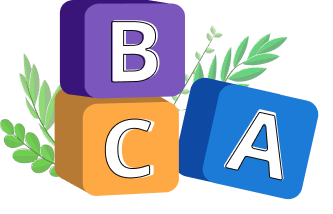

(telepono)
numero ng telepono
the number used for calling someone's phone
Impormasyon sa Gramatika:


(cellphone)
telepono
an electronic device used to talk to a person who is at a different location


(selpon)
mobile na telepono
a cellular phone or cell phone; a phone without any wires and with access to a cellular radio system that we can carry with us and use anywhere
Impormasyon sa Gramatika:


(tawagan)
tumawag
to telephone a place or person
Impormasyon sa Gramatika:


(tumawag sa telepono)
tumawag
to make a phone call or try to reach someone on the phone
Impormasyon sa Gramatika:


(ring)
tumawag
to make a phone call to someone
Impormasyon sa Gramatika:
![to [make] a (phone) call](https://cdn.langeek.co/photo/48703/original/call?type=jpeg)

N/A
to use a telephone or other communication device to start a phone conversation with someone

(tumugon)
sumagot
to respond to a stimulus by taking appropriate action
Impormasyon sa Gramatika:


(nag-text)
nagpadala ng mensahe
to send someone a brief text, image, etc. in an electronic form
Impormasyon sa Gramatika:


(sulat)
mensahe
a written or spoken piece of information or communication sent to or left for another person


(text)
mensaheng text
a written message that one sends or receives using a cell phone
Impormasyon sa Gramatika:


(text na mensahe)
mensaheng text
a written message that one sends or receives using a mobile phone
A text message is a short written communication sent from one phone to another. It typically consists of simple text, though it can also include emojis or links. Text messages are usually sent through SMS (Short Message Service) or MMS (Multimedia Messaging Service), allowing users to send information quickly and efficiently. Text messaging is popular for both personal and business communication, as it is fast, convenient, and does not require the recipient to be available for a phone call. Many mobile phones and messaging apps also allow group texting, enabling multiple people to receive and reply to messages.
Impormasyon sa Gramatika:


(sumulat)
kumuha
to record or write down information, typically for future reference or use
Impormasyon sa Gramatika:


(tawag)
linya
a telephone connection or service
A line is the physical or digital link that enables a telephone to make and receive calls. It connects the phone to a network, such as a landline system or mobile network, allowing communication between users. A telephone line can be a traditional wired connection, such as a landline, or a wireless connection, such as a mobile phone signal. It is essential for establishing voice communication, and in some cases, may also support other services like Internet access or faxing.

(naka-abala)
abala
(of a phone line) engaged in a call, meaning no new calls can be connected at that time


N/A
using the phone


(telepono)
numero
a specific series of digits used to call a particular telephone or contact a particular service

(dalawang)
dobleng
(of letters and numbers) referring to the same letter or number occurring consecutively, one immediately following the other

(zero)
o
used as an informal way to indicate the number zero in a sequence or phone number

(telepono sa lupa)
lansung telepono
a phone connection using underground cables or wires on poles, rather than the satellite connection
A landline is a type of telephone that is connected to a fixed physical network through wires, rather than using wireless signals like mobile phones. Landlines are often found in homes and offices and are typically more reliable for making calls, especially in areas with poor cell phone reception. Unlike mobile phones, landlines do not require batteries or data plans to function, and the call quality is generally clearer. Despite the growing use of mobile phones, landlines remain important for many people, especially for those who prefer a stable connection or use them as a backup.


(sma'telepono)
smartphone
a portable device that combines the functions of a cell phone and a computer, such as browsing the Internet, using apps, making calls, etc.
A smartphone is a portable electronic device that combines the features of a cell phone with advanced computing capabilities. It allows users to make calls, send messages, browse the Internet, use apps, take photos and videos, and access various digital services. Smartphones typically include touchscreens, cameras, GPS, and wireless connectivity options like Wi-Fi and Bluetooth. They are powered by operating systems that support a wide range of applications, making them versatile tools for communication, entertainment, and productivity.
Impormasyon sa Gramatika:


(nasa)
sa
into or inside of a place, object, or area
Impormasyon sa Gramatika:


N/A
away from one's home
Impormasyon sa Gramatika:


(sunduin)
kunin
to go to a place and bring someone or something back from that location
Impormasyon sa Gramatika:

N/A
at the same time as what is being stated


(tumawag muli)
tawagan pabalik
to return a phone call or contact someone again when the first attempt to communicate was missed or unsuccessful
Impormasyon sa Gramatika:

N/A
to call someone back after they have called one
Impormasyon sa Gramatika:

(babayaran ang tawag)
tumawag muli
to return a call or call someone again because one was not available the first time they called
Impormasyon sa Gramatika:


N/A
a word we say when we leave or end a phone call


N/A
a short way to say goodbye


(Isa lang sandali)
Sandali lang
used to request a very brief pause or delay, often to attend to something immediately before responding to a request or continuing a conversation

N/A
to receive information for someone, typically from a phone call, when they are not available

N/A
to provide information or a request for someone to receive later, usually when they are unavailable to answer a phone call or in person

( nagsasalita. Sino'ng tumatawag?)
Oo
used when answering the phone to let the caller know that the person they are trying to reach is on the line
Congratulations! !
Natuto ka ng 34 mga salita mula sa undefined. Upang mapabuti ang pag-aaral at pagsusuri ng bokabularyo, magsimula ng pag-eehersisyo!
Repasuhin
Flashcards
Pagbaybay
Pagsusulit
